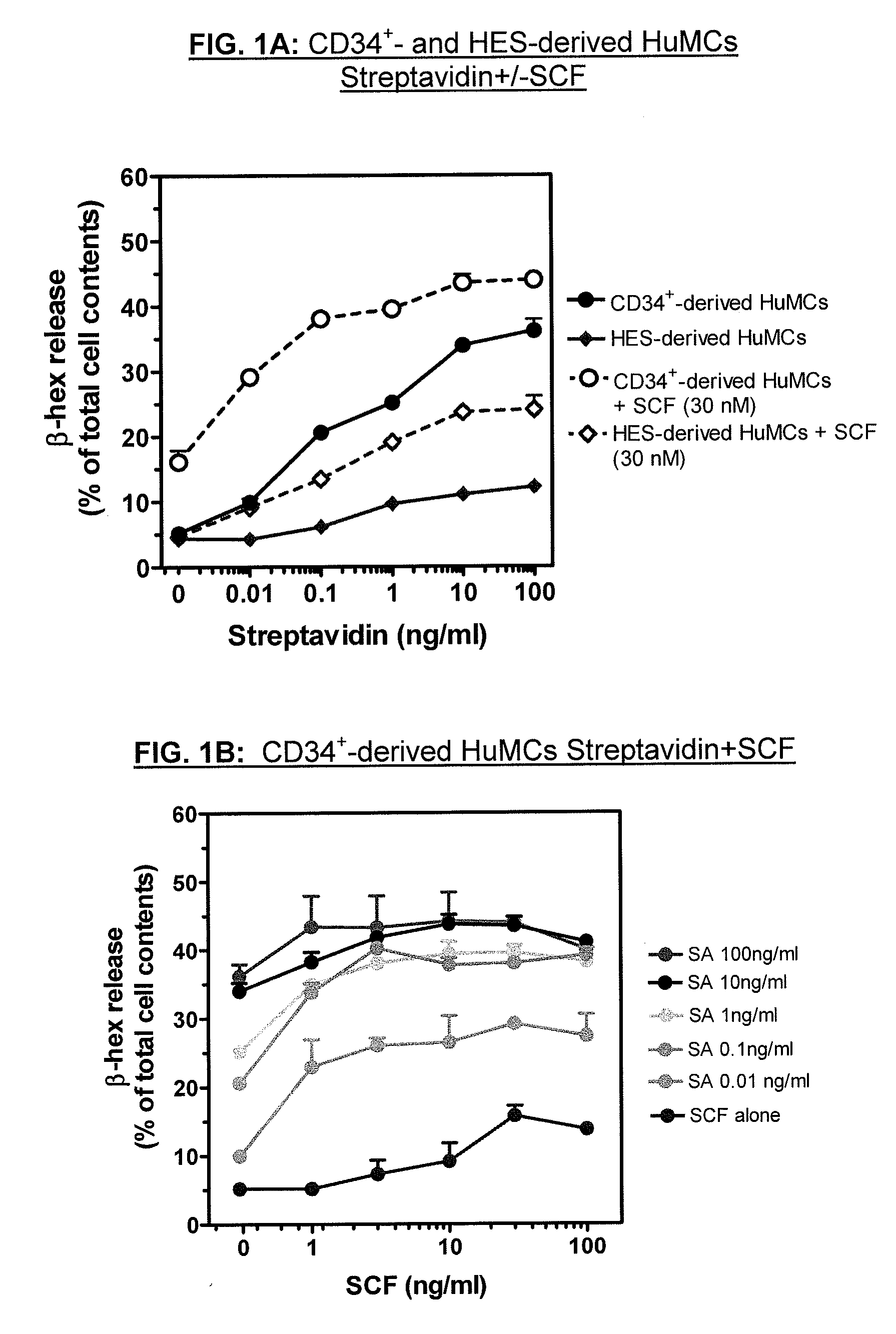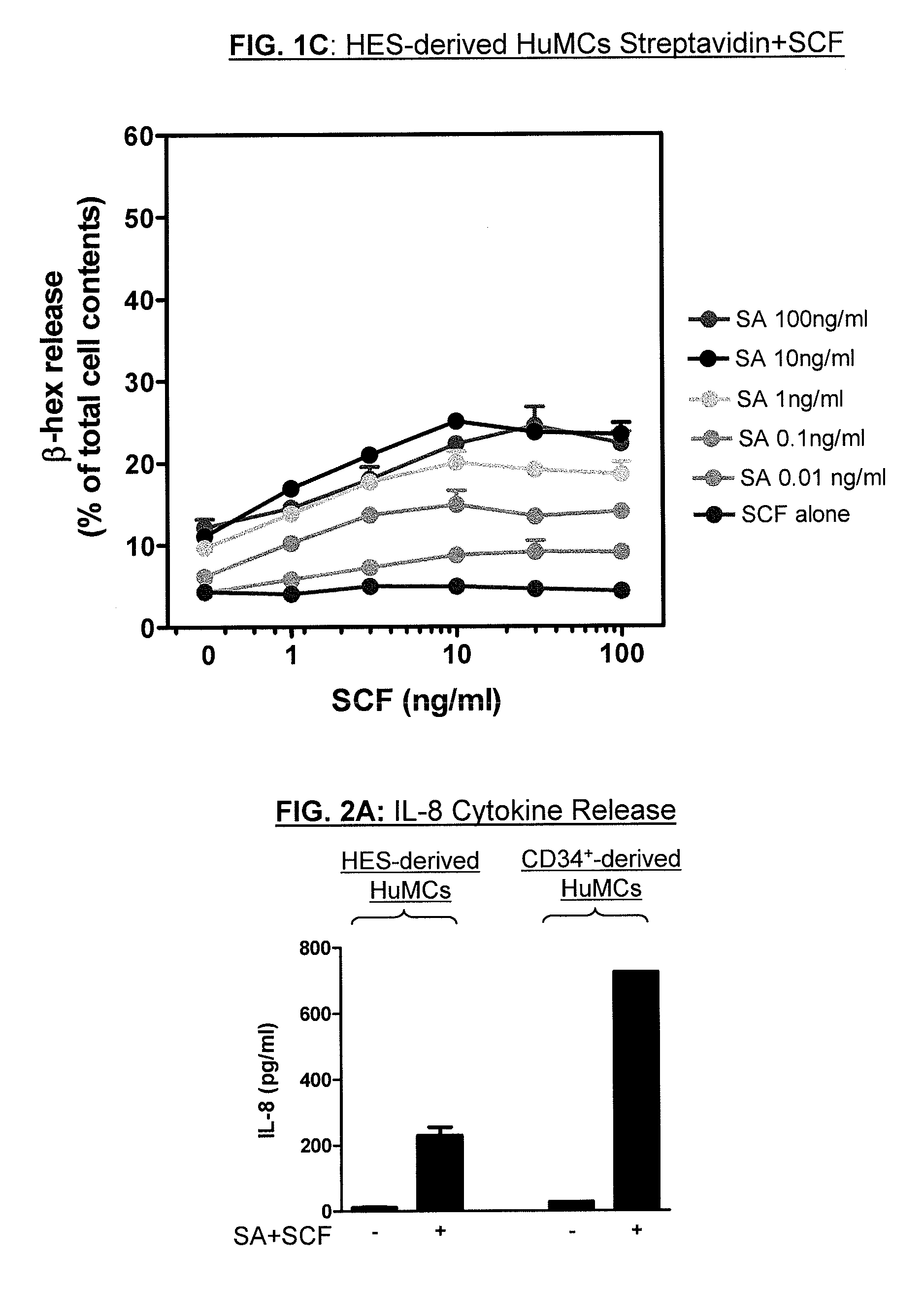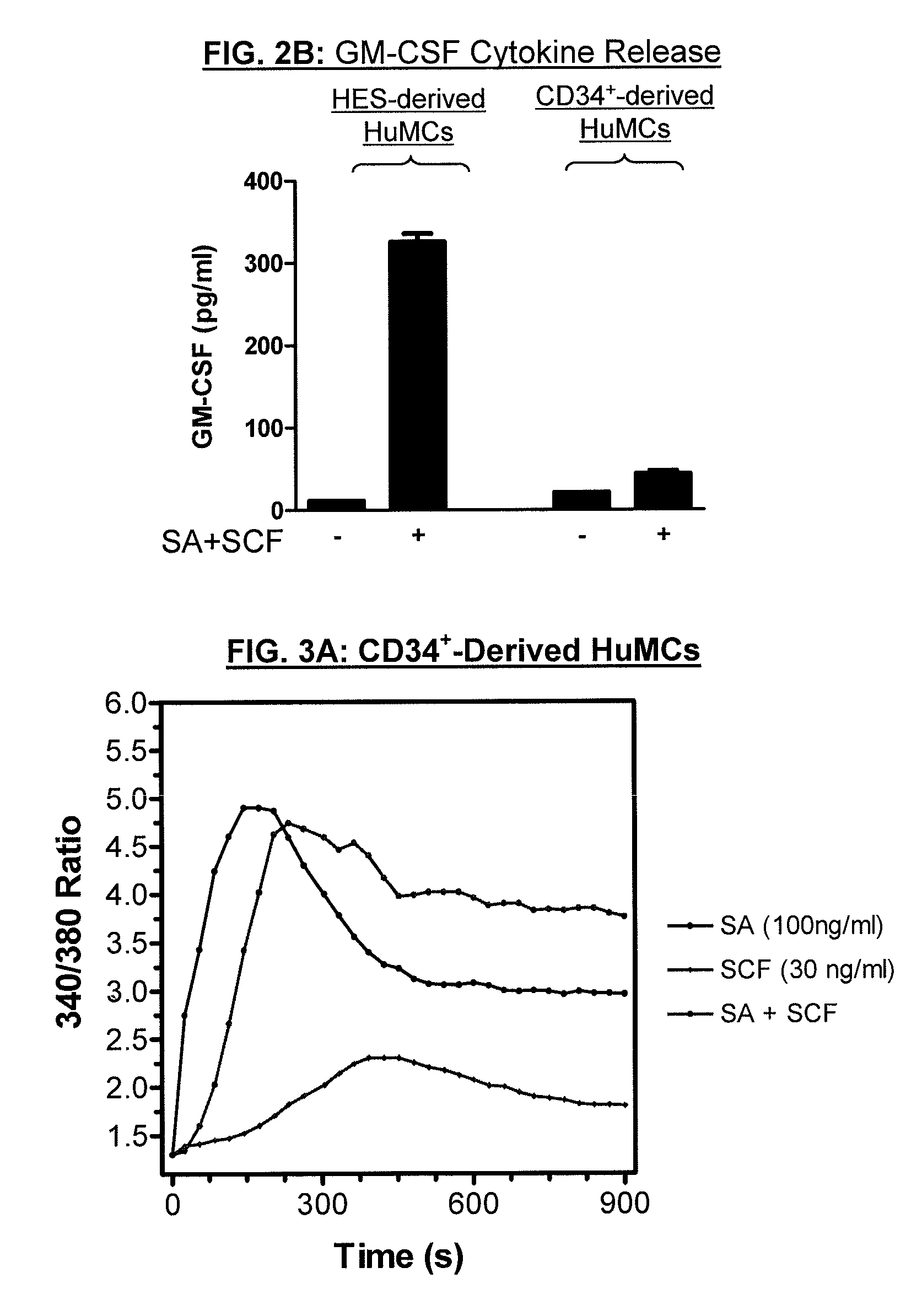Method for production of mast cells from stem cells
a stem cell and mast cell technology, applied in the field of molecular biology, can solve the problems of limited expansion of cord blood and other hematopoietic progenitor cells, difficult isolation of mast cells, and unsatisfactory rodent cells
- Summary
- Abstract
- Description
- Claims
- Application Information
AI Technical Summary
Benefits of technology
Problems solved by technology
Method used
Image
Examples
example 1
Mast Cells Derived from Human Embryonic Stem Cells
[0121]Mast cells derived from human embryonic stem cells are a cell type not previously characterized from human embryonic stem cells. Our mast cells have the potential to be amplified to relatively large numbers and the ability to be purified. In contrast to this, mast cells from the human body are not found in great numbers, and they reside in tissues which makes isolation difficult.
[0122]Generation of mast cells was performed using the following three step differentiation protocol:
[0123]H1 cells were routinely maintained on MEFs, and then passed onto almost confluent OP9 stromal cells in αMEM+20% defined FBS+100 ng / ml TPO at 1×105 cells / well (1 well is 9.6 cm2). Cells were fed with fresh medium at days 2 and 4. On day 7, cells were split 1:3 onto fresh OP9 cells using collagenase IV. Cells were fed with fresh medium at days 8 and 10. On day 11, cells were split 1:1 onto fresh OP9 cells using collagenase IV, followed by Trypsin / EDT...
example 2
Characterization of hESC-Derived Mast Cells and CD34+Derived Mast Cells
[0127]Properties of hESC-derived mast cells, produced by the method described in Example 1, were compared with CD34+ derived mast cells, produced by the method disclosed in Jensen et al., 2008. The results of these tests indicate that, while some variation in characteristics were observed between the hESC-derived and CD34+ derived mast cells (e.g., variation in staining or expression levels for certain markers), both the hESC-derived mast cells and the CD34+ derived mast cells were shown to be functional mast cells.
[0128]Both hESC-derived and CD34+ derived mast cells stained for toluidine blue, which is a marker of granules. Additionally, both hESC-derived and CD34+ derived mast cells were observed to be c-kit positive, and both hESC-derived and CD34+ derived mast cells were observed to express FcεR1. The hES cell derived mast cells were observed, on average, to express FcεR1 at lower levels than CD34+ derived ma...
example 3
Defined Methods for Production of hESC-Derived Mast Cells
[0133]hESC-derived mast cells were produced using the following protocol for EB formation and subsequent differentiation:
[0134]Step 1: Undifferentiated hESCs and iPSCs that were adapted to feeder free growth on Matrigel coated plates were harvested at confluence using TrypLE treatment for 6 minutes at 37° C. Tryple E in the wells was neutralized using EB basal media containing IMDM supplemented with 20% BIT9500 (Stem Cell Technologies), 1% NEAA, 1 mM L-glutamine, and 0.1 mM mercaptoethanol (all from Invitrogen, Carlsbad, Calif.), 0.75% BSA, 50 ug / ml Ascorbic acid. To facilitate EB formation the cells were resuspended in EB basal media supplemented with 1 μM Rock inhibitor (H1152), Soybean trypsin inhibitor (0.25 mg / ml) following Trypsin treatment. The cell viability was determined and the resulting cell suspension was plated in low attachment plates for 24 hours.
[0135]Step 2: On the next day the cells EBs were collected from e...
PUM
| Property | Measurement | Unit |
|---|---|---|
| concentration | aaaaa | aaaaa |
| concentration | aaaaa | aaaaa |
| concentration | aaaaa | aaaaa |
Abstract
Description
Claims
Application Information
 Login to View More
Login to View More - R&D
- Intellectual Property
- Life Sciences
- Materials
- Tech Scout
- Unparalleled Data Quality
- Higher Quality Content
- 60% Fewer Hallucinations
Browse by: Latest US Patents, China's latest patents, Technical Efficacy Thesaurus, Application Domain, Technology Topic, Popular Technical Reports.
© 2025 PatSnap. All rights reserved.Legal|Privacy policy|Modern Slavery Act Transparency Statement|Sitemap|About US| Contact US: help@patsnap.com



